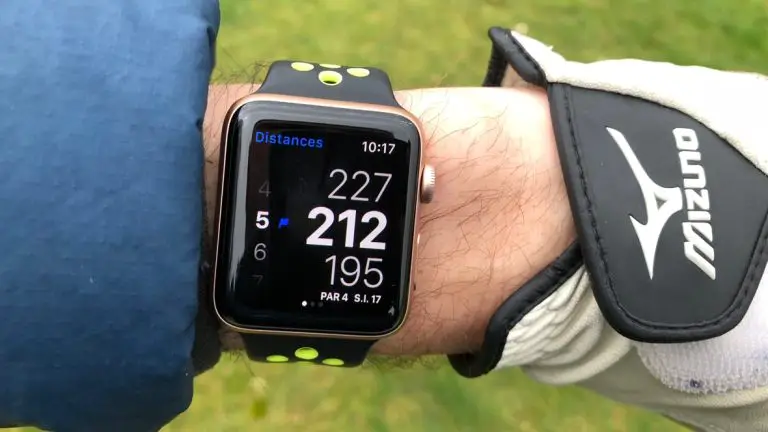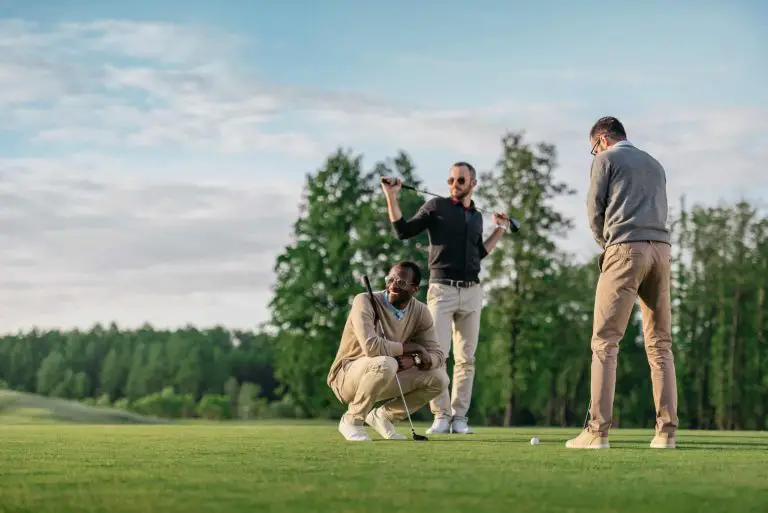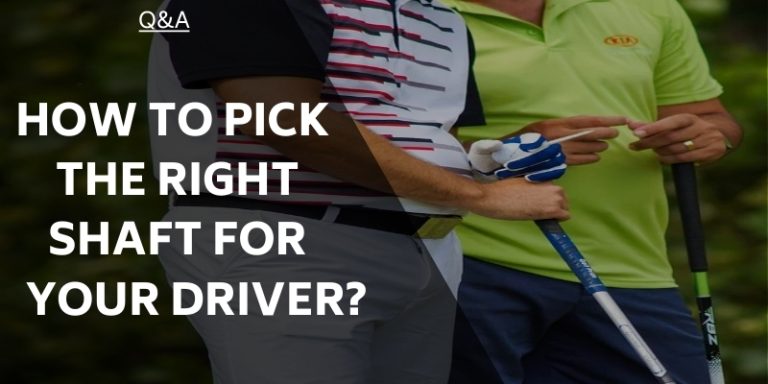Why Do I Hit Behind The Golf Ball

Striking the golf ball cleanly and making solid contact is the ultimate goal for every golfer. However, if you frequently find yourself hitting behind the ball, it can be incredibly frustrating and detrimental to your game. Hitting behind the golf ball occurs when the club strikes the ground before making contact with the ball, resulting in shots that lack power, accuracy, and consistency. So, why do you hit behind the golf ball?
In this article, we will explore the factors that contribute to hitting behind the ball and provide insights into the mechanics, common mistakes, and corrective measures to help you improve your ball-striking. By understanding the root causes of hitting behind the ball and implementing the right adjustments, you can develop a more solid and reliable swing.
Throughout this article, we will delve into the intricacies of swing mechanics, weight distribution, ball position, and other key factors that influence your ability to make clean contact with the ball. We will also discuss common mistakes and offer practical tips and actionable strategies to help you overcome the challenge of hitting behind the golf ball.
So, whether you’re a beginner struggling to find consistency or an experienced golfer looking to fine-tune your technique, let’s uncover the reasons behind hitting behind the golf ball and equip you with the tools and knowledge to improve your ball-striking skills.

Understanding the Basics
What does it mean to hit behind the golf ball?
Hitting behind the golf ball, also known as “fat shots” or “hitting it fat,” occurs when the club strikes the ground before making contact with the ball. This can lead to shots that lack power, distance, and control. Instead of the crisp strike you desire, the club digs into the turf, causing the ball to come up short or veer off target.
Differentiating between hitting behind and other types of mishits
It’s important to differentiate hitting behind the golf ball from other types of mishits, such as thin shots or toe shots. While hitting behind the ball involves striking the ground before the ball, thin shots occur when the club makes contact with the upper half of the ball, resulting in low-flying shots. Toe shots, on the other hand, involve striking the ball toward the toe of the clubface, leading to inconsistent direction and distance.
Consequences of hitting behind the ball
Hitting behind the golf ball can have several consequences on your game. Firstly, it robs you of power and distance, as the club’s energy is absorbed by the turf rather than being transferred to the ball. Additionally, hitting behind the ball can result in a loss of accuracy and control, making it challenging to hit your desired target. Understanding the underlying causes of hitting behind the ball is crucial to address this issue and improve your overall ball-striking ability.
The Mechanics of Hitting Behind
To understand why you hit behind the golf ball, it’s essential to explore the various factors that contribute to this mishit. By examining swing mechanics and impact factors, we can gain insights into the root causes and implement corrective measures.
Analyzing swing mechanics and impact factors
Several swing mechanics and impact factors can contribute to hitting behind the ball. Understanding these elements will provide a deeper comprehension of the problem and guide us in finding effective solutions. Let’s explore the key factors involved:
- Swing path and clubface angle at impact: The swing path describes the direction the clubhead is traveling during the swing. If your swing path is too steep or outside-in, it increases the likelihood of hitting behind the ball. Additionally, the clubface angle at impact plays a significant role. An open or closed clubface can result in inconsistent strikes and hitting behind the ball.
- Weight distribution and body rotation: Proper weight distribution and body rotation are essential for consistent ball striking. Failing to shift your weight correctly or lacking proper rotation can disrupt the club’s path and cause you to hit behind the ball.
- Ball position and stance width: The position of the ball in your stance and the width of your stance can affect your ability to make solid contact. Placing the ball too far back in your stance or having a narrow stance can lead to hitting behind the ball.
Exploring the impact of each factor on hitting behind
Now that we’ve identified the key factors, let’s delve into their impact on hitting behind the ball and explore potential solutions.
Swing Path: Inside-out or outside-in
An inside-out swing path occurs when the club approaches the ball from inside the target line, while an outside-in swing path involves the club traveling outside the target line. Both swing paths can result in hitting behind the ball, although for different reasons.
- Inside-out swing path: When the swing path is too inside-out, the club tends to approach the ball from a shallower angle. While this can be advantageous for hitting draws or fades, it increases the risk of hitting behind the ball. The club’s shallower angle of attack can cause it to bottom out before reaching the ball, resulting in fat shots.
- Outside-in swing path: Conversely, an outside-in swing path can also lead to hitting behind the ball. With an outside-in path, the club approaches the ball from a steeper angle. This steep angle of attack can cause the club to strike the ground too early, resulting in shots that come up short and lack power.
To address swing path issues, focus on improving your swing plane and club path. Practice drills that promote a more neutral or slightly inside-out swing path to ensure a more consistent ball-striking.
Clubface Angle: Open or Closed
The clubface angle at impact significantly influences the direction and quality of your shots. An open clubface at impact means the face is pointing more to the right of the target (for right-handed golfers), while a closed clubface points more to the left.
- Open clubface: If your clubface is open at impact, it can cause the clubhead to “slide” under the ball, resulting in hitting behind it. This typically happens when the wrists prematurely release, leaving the face open through impact.
- Closed clubface: On the other hand, a closed clubface can also contribute to hitting behind the ball. A closed face tends to deloft the club, reducing the bounce and increasing the chances of the leading edge digging into the turf before reaching the ball.
To address clubface angle issues, focus on maintaining proper hand and wrist position throughout the swing. Practice drills that encourage a square clubface at impact, such as hitting punch shots or focusing on a smooth release through the ball.
Weight Distribution: Leaning back or forward
Proper weight distribution throughout the swing is crucial for consistent ball-striking. Leaning too far back or forward during the swing can disrupt the club’s path and lead to hitting behind the ball.
- Leaning back: If you have a tendency to lean back during your swing, it can cause your swing bottom to move behind the ball. This backward weight shift can result in fat shots and inconsistent contact.
- Leaning forward: Conversely, leaning too far forward can also contribute to hitting behind the ball. When you lean excessively toward the target, the club may reach the ground before reaching the ball, resulting in fat shots.
To address weight distribution issues, focus on maintaining a balanced and centered stance throughout the swing. Practice drills that encourage proper weight transfer and body rotation, such as initiating the downswing with your lower body and maintaining a stable upper body position.
Ball Position: Too far back or too far forward
The position of the ball in your stance affects the angle of attack and the contact point with the ball. Placing the ball too far back or too far forward can lead to hitting behind the ball.
- Ball too far back: When the ball is positioned too far back in your stance, it encourages a steeper angle of attack. This steep angle can cause the club to strike the ground before making contact with the ball.
- Ball too far forward: Conversely, if the ball is too far forward in your stance, it promotes a shallower angle of attack. While this can be beneficial for longer clubs, it increases the risk of hitting behind the ball with shorter irons.
To find the correct ball position, experiment during practice sessions. Start with a centered position and gradually adjust forward or backward until you find the position where you consistently make solid contact with the ball. Remember that the optimal ball position may vary depending on the club you’re using, so take the time to find the right position for each club in your bag.
Common Mistakes and Corrections
Understanding common mistakes that lead to hitting behind the golf ball is crucial in the process of improving your ball-striking consistency. By identifying these mistakes and implementing corrective measures, you can make significant improvements in your game. Let’s explore some of the most common mistakes and how to address them:
Mistake: Scooping or Flipping the Wrists
One of the most prevalent mistakes golfers make is scooping or flipping their wrists through impact. This improper wrist action can lead to inconsistent contact and hitting behind the ball.
Correction: To address this mistake, focus on maintaining a flat left wrist (for right-handed golfers) through impact. This helps ensure a descending strike on the ball and prevents the club from bottoming out too early. Practice drills that encourage proper wrist position and create the feeling of compressing the ball at impact.
Mistake: Early Release of the Club
Another mistake that can contribute to hitting behind the ball is an early release of the club. Releasing the club too early in the downswing can result in a loss of lag and a shallow angle of attack.
Correction: To correct this mistake, work on maintaining lag in your downswing. Lag refers to the angle between your left arm (for right-handed golfers) and the clubshaft. Focus on initiating the downswing with your lower body while maintaining the angle between your left arm and the club for as long as possible. This promotes a more downward and powerful strike on the ball.
Mistake: Insufficient Weight Transfer or Poor Body Rotation
Inadequate weight transfer and lack of proper body rotation can also contribute to hitting behind the ball. Failing to shift your weight correctly or rotate your body through the swing can lead to inconsistent strikes.
Correction: To address this mistake, practice drills that promote proper weight transfer and body rotation. For weight transfer, focus on shifting your weight to your front foot during the downswing, ensuring a balanced and centered finish position. For body rotation, work on initiating the downswing with your lower body, allowing your upper body to follow naturally. This promotes a more synchronized and powerful swing motion.
By addressing these common mistakes and implementing the necessary corrections, you can significantly reduce the occurrence of hitting behind the golf ball and improve your overall ball-striking consistency.
Fine-Tuning Your Technique
Beyond addressing the common mistakes, there are additional techniques and adjustments you can make to fine-tune your ball-striking and minimize hitting behind the ball. Let’s explore some practical tips and actionable strategies to help you improve your technique:
Tip: Maintain a Steady Head Position
One important aspect of a solid golf swing is maintaining a steady head position throughout the swing. Excessive head movement can lead to inconsistent strikes and make it difficult to make clean contact with the ball.
Action: During your swing, focus on keeping your head relatively still and centered. Avoid excessive lateral or vertical movement. By maintaining a steady head position, you’ll promote a more stable and consistent swing, increasing the chances of making solid contact with the ball.
Tip: Establish Proper Tempo and Rhythm
Tempo and rhythm play a crucial role in a consistent golf swing. Establishing a smooth and balanced tempo helps maintain control and allows for proper sequencing of the swing.
Action: Practice swinging with a consistent and deliberate tempo. Develop a rhythm that feels comfortable to you, emphasizing a smooth transition from backswing to downswing. Avoid rushing or decelerating through the swing. By finding your optimal tempo and rhythm, you’ll improve the timing and sequencing of your swing, reducing the chances of hitting behind the ball.
Tip: Develop a Pre-shot Routine
Having a pre-shot routine can help you establish consistency and focus before each shot. A well-defined routine prepares your mind and body, ensuring that you approach the ball with confidence and clarity.
Action: Create a pre-shot routine that works for you. This may include visualizing the desired shot, taking practice swings to feel the proper swing motion, and aligning yourself to the target. Consistency is key, so practice your routine during practice sessions and incorporate it into your rounds. By following a pre-shot routine, you’ll enhance your mental and physical preparation, increasing the chances of making solid contact with the ball.
Tip: Practice Distance Control
Developing precise distance control is essential to avoid hitting behind the ball. Being able to consistently hit the ball the desired distance allows you to plan and execute your shots more effectively.
Action: Dedicate practice time to distance control drills. Work on hitting shots with different swing lengths, focusing on the feel and rhythm of each swing. Practice hitting specific targets at various distances, gradually increasing the challenge as you improve. By honing your distance control skills, you’ll have better control over your ball-striking and reduce the likelihood of hitting behind the ball.
Tip: Focus on Impact and Follow-through
The moment of impact and the quality of your follow-through can provide valuable feedback about your ball-striking. Paying attention to these crucial elements can help you make necessary adjustments and improve your contact with the ball.
Action: When practicing, focus on the impact position and the quality of your follow-through. Aim to strike the ball with a descending blow, compressing it against the ground. After impact, ensure that your body continues to rotate and extend toward the target, maintaining a balanced and athletic finish position. By focusing on these aspects, you’ll develop better awareness and control of your ball-striking, minimizing the chances of hitting behind the ball.
Seeking Professional Assistance
Sometimes, despite your best efforts, you may encounter persistent issues with hitting behind the ball. In such cases, seeking professional assistance can provide valuable insights and guidance. Working with a golf instructor or coach who specializes in swing mechanics can help you identify specific areas of improvement and offer personalized instruction.
Expert Analysis
A golf instructor or coach can provide expert analysis of your swing mechanics, club positioning, and overall technique. Through careful observation and video analysis, they can offer objective feedback and identify any swing faults or inefficiencies that contribute to hitting behind the ball. With their expertise, they can provide precise adjustments and guidance to help you correct those issues.
Customized Instruction
Working with a knowledgeable instructor ensures that you receive customized instruction tailored to your specific needs. They take into account factors such as your swing type, physical abilities, and learning style. Through personalized drills and exercises, they can help you address the specific aspects of your swing that contribute to hitting behind the ball.
Accountability and Support
Engaging in lessons with a professional instructor provides a structured and accountable approach to your improvement. They can monitor your progress, provide ongoing support and motivation, and keep you on track toward your goals. This accountability and support system can significantly enhance your learning experience and expedite your progress in eliminating hitting behind the ball.
When seeking professional assistance, consider factors such as the instructor’s qualifications, experience, and teaching style. Look for someone who has a track record of helping golfers overcome similar issues and improving their ball-striking.
Troubleshooting Persistent Issues
If you’re still experiencing persistent issues with hitting behind the ball, it’s essential to troubleshoot and address any potential underlying factors. Consider the following areas for further investigation:
Physical Limitations or Restrictions
Physical limitations or restrictions in your body’s mobility, flexibility, or strength can impact your ability to make clean contact with the ball. Addressing these physical factors can help improve your swing mechanics and reduce the likelihood of hitting behind the ball.
Action: Consult with a fitness professional or physical therapist to assess your mobility, flexibility, and strength. They can recommend exercises and stretches that target specific areas of improvement. By addressing any physical limitations or restrictions, you can optimize your body’s ability to execute a solid golf swing and minimize hitting behind the ball.
Equipment Considerations
In some cases, equipment inconsistencies or deficiencies can contribute to hitting behind the ball. Factors such as club length, lie angle, shaft flex, and grip size can affect your swing mechanics and impact your ability to make clean contact.
Action: Consult with a professional club fitter to ensure that your equipment is properly fitted to your specifications. They can evaluate your current clubs and make necessary adjustments or recommendations. The right equipment, customized to your swing characteristics and physical attributes, can greatly improve your ability to strike the ball cleanly and avoid hitting behind it.
Mental Game and Focus
The mental aspect of the game plays a significant role in your ability to strike the ball effectively. Mental factors such as focus, concentration, and confidence can influence your swing mechanics and impact your ball-striking consistency.
Action: Develop mental strategies to enhance your focus and concentration during your swing. Techniques such as visualization, positive self-talk, and mindfulness can help you stay in the present moment and maintain a clear mind while executing your swing. By cultivating a strong mental game, you can improve your ability to make clean contact with the ball and reduce the instances of hitting behind it.
Summary and Conclusion
Hitting behind the golf ball can be a frustrating obstacle to overcome, but by understanding the mechanics, addressing common mistakes, and implementing the necessary adjustments, you can improve your ball-striking consistency. Focus on swing path, clubface angle, weight distribution, and ball position to reduce the chances of hitting behind the ball.
Additionally, incorporate practical tips such as maintaining a steady head position, establishing proper tempo and rhythm, and developing a pre-shot routine to optimize your technique. Seeking professional assistance can provide valuable guidance and analysis, while troubleshooting physical limitations and equipment considerations can further enhance your ability to strike the ball cleanly.
Remember, improvement takes time and effort. Be patient with yourself as you work on your swing mechanics and mental approach. With dedication, practice, and a commitment to continuous improvement, you can overcome hitting behind the golf ball and enjoy more consistent and confident ball-striking on the course.





